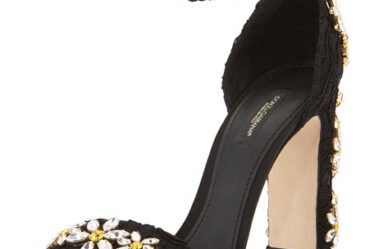
The fashion industry has experienced a profound transformation in recent years, with the emergence of online platforms revolutionizing the way people engage with style and trends. As the world becomes increasingly interconnected, digital spaces have become virtual runways, showcasing the latest fashion trends to millions of fashion enthusiasts. In this article, we delve into the exciting realm of online fashion trends, exploring how the internet has shaped and influenced the way we perceive and engage with style.
- Social Media Influences:
Social media platforms have become powerful catalysts for fashion trends, providing a stage for influencers and fashion enthusiasts to showcase their unique styles and perspectives. Instagram, TikTok, and Pinterest have transformed into virtual fashion hubs, where users can explore and engage with an array of trends, styles, and fashion inspirations. Influencers and celebrities now possess the ability to sway consumer preferences, introducing new styles and brands to their vast online audiences.
- Rise of Sustainable Fashion:
With increased awareness about environmental sustainability and ethical fashion, the online space has become a driving force for promoting sustainable fashion trends. Consumers are now actively seeking eco-friendly clothing options and turning to online platforms to discover sustainable brands and connect with like-minded individuals. Influencers and fashion bloggers are utilizing their online presence to advocate for sustainable fashion, sharing tips on thrift shopping, upcycling, and responsible consumption.
- Personalized Shopping Experiences:
The advent of online shopping has transformed the way consumers discover and purchase fashion items. Online retailers and fashion platforms are utilizing advanced algorithms and data analytics to offer personalized shopping experiences. With features like recommendation engines and virtual stylists, users can receive tailored suggestions based on their preferences, creating a more immersive and personalized fashion journey.
- Gender-Neutral Fashion:
The online fashion realm has played a significant role in breaking gender norms and embracing gender-neutral fashion. Many brands are now challenging traditional fashion boundaries, offering inclusive collections that cater to individuals regardless of gender identity. Online communities and social media platforms have fostered a sense of acceptance and representation, encouraging fashion enthusiasts to express themselves freely without conforming to societal norms.
- Nostalgic Revivals:
Online fashion trends have also witnessed a resurgence of nostalgia, as various eras make a comeback through digital platforms. Popularized by influencers and celebrities, vintage fashion styles from the ’70s, ’80s, and ’90s have reemerged, captivating a new generation of fashion enthusiasts. Online marketplaces and vintage stores have become treasure troves for finding unique and retro fashion pieces, enabling individuals to embrace their favorite fashion eras.
- Virtual Fashion and Augmented Reality:
Advancements in technology have paved the way for virtual fashion experiences and augmented reality (AR) applications. Virtual try-on features and AR filters allow users to visualize clothing items and accessories, creating a more interactive and immersive shopping experience. Virtual fashion shows have also gained popularity, providing designers with an innovative platform to showcase their collections to a global audience without the limitations of physical events.
Conclusion:
The online fashion landscape continues to evolve, shaping trends, and redefining the way we interact with style. From the rise of social media influences to sustainable fashion initiatives, personalized shopping experiences, and virtual fashion showcases, the internet has opened up a world of possibilities for fashion enthusiasts. As technology continues to advance, we can expect even more innovative ways to engage with fashion in the digital realm, fostering creativity, inclusivity, and boundless self-expression.



